Every year, millions of people around the world take pills they think are real-only to find out later they were fake. These aren’t mistakes. They’re deliberate frauds. Counterfeit drugs look just like the real thing: same color, same shape, same packaging. But they might have no active ingredient, the wrong dose, or even toxic chemicals inside. And the worst part? Counterfeit drugs are getting harder to spot.
You might think this only happens in faraway countries. But it’s happening here too. In the U.S., nearly 1 in 5 people have bought medicine online from a site that wasn’t legitimate. And while only about 1% of medicines sold in developed countries are fake, that number jumps to 10-30% in places with weaker oversight. In parts of Africa and Southeast Asia, more than 1 in 4 pills sold are counterfeit. These aren’t just bad drugs-they’re dangerous. People have died from fake antibiotics, fake insulin, fake cancer treatments.
Regulators and pharmaceutical companies are fighting back with scanners, barcodes, and blockchain. But here’s the truth: no machine can replace your eyes. If you don’t know what to look for, you won’t know when something’s wrong. That’s why your vigilance isn’t just helpful-it’s essential.
How to Spot a Fake Medicine
Most counterfeit drugs are caught before they reach you-but not all. The best defense is knowing what to check every time you get a new prescription or buy over-the-counter pills.
- Check the packaging. Look for spelling errors, blurry logos, or mismatched colors. Fake boxes often have slightly off fonts or uneven printing. Real medicine boxes are made with precision. If it looks like it was printed on a home printer, it probably was.
- Look for tamper-proof seals. Legitimate medicines come with seals that break when opened. If the seal is loose, missing, or looks like it was resealed, don’t take it. The EU and FDA require these on all prescription drugs. If your pharmacy didn’t give you one, ask why.
- Compare the pills. Did your last batch of metformin have a different imprint? Was the color slightly lighter? Even small changes matter. Keep your old pill bottles for comparison. If the new pills look off, call your pharmacist before taking them.
- Verify the source. Only buy from licensed pharmacies. In the U.S., look for the .pharmacy seal on websites. If it’s not there, it’s not safe. Avoid online sellers that don’t require a prescription, offer prices that seem too good to be true, or ship from overseas.
- Use verification tools. Many drugs now come with QR codes or unique serial numbers. Apps like MedCheck (used by over 1.2 million people) let you scan the code and confirm the product is real. In France and Brazil, digital leaflets replaced paper inserts-meaning you have to scan the code just to see the instructions. That’s intentional. It makes faking harder.
These steps don’t take long. But they work. A 2022 study found that people who followed these simple checks caught 70-80% of counterfeit medicines just by looking. That’s not luck. That’s awareness.
Where Fake Medicines Come From
Most counterfeit drugs don’t show up in your local pharmacy. They come from the internet. According to Pfizer’s 2023 report, 89% of fake medicines are sold online. And it’s not just shady websites. Social media ads, Instagram influencers, and Facebook groups are now major sources. People post: “Buy cheap insulin here-$20 a vial!” And others click, not realizing they’re risking their lives.
Even legitimate-looking websites can be fake. Some use fake licenses, copied logos, and even fake customer reviews. The National Association of Boards of Pharmacy (NABP) found that 41% of U.S. consumers bought medicine online without checking if the site was verified. And 18% of those people later had bad reactions linked to fake drugs.
Another source? Illicit supply chains. In countries with weak regulation, counterfeiters buy real packaging from stolen batches, refill them with cheap chemicals, and sell them as the real thing. This happens in pharmacies, clinics, and even street markets. In Nigeria, India, and parts of Latin America, this is common. But it’s not limited to those places. Fake drugs have been found in U.S. pharmacies after being smuggled in through international shipments.
The bottom line? Don’t assume safety just because the label looks right. Fake manufacturers are getting smarter. Some now replicate serial numbers and even holograms. That’s why your personal check is still the last line of defense.
What to Do If You Find Something Suspicious
Seeing something wrong isn’t enough. You have to act.
- Stop using it. Don’t wait to see if you feel sick. If the packaging, pill, or source looks off, don’t take it.
- Return it to the pharmacy. Even if you bought it online, take it to a local pharmacy. They can report it to authorities. Pharmacies are required to collect and report suspected counterfeits.
- Report it. In the U.S., call the FDA’s MedWatch hotline at 1-800-FDA-1088. In Europe, contact your national health agency. In Brazil, report to ANVISA. In Canada, contact Health Canada. These agencies track patterns. One report can lead to a whole shipment being stopped.
- Warn others. If you bought online, leave a review. Post on Reddit’s r/pharmacy or other forums. Social media is where these scams spread-and where they can be stopped.
Real people have saved lives this way. In January 2024, a woman in Brazil noticed her diabetes pills had different markings than before. She didn’t take them. She reported it. ANVISA traced the batch back to a smuggled shipment. Over 12,000 fake pills were seized. That’s one person’s vigilance stopping a public health threat.
Pfizer says its consumer reporting program led to 217 counterfeit interdictions across 116 countries in 2023. That’s 3.2 million doses kept from reaching patients-all because someone noticed something didn’t look right.
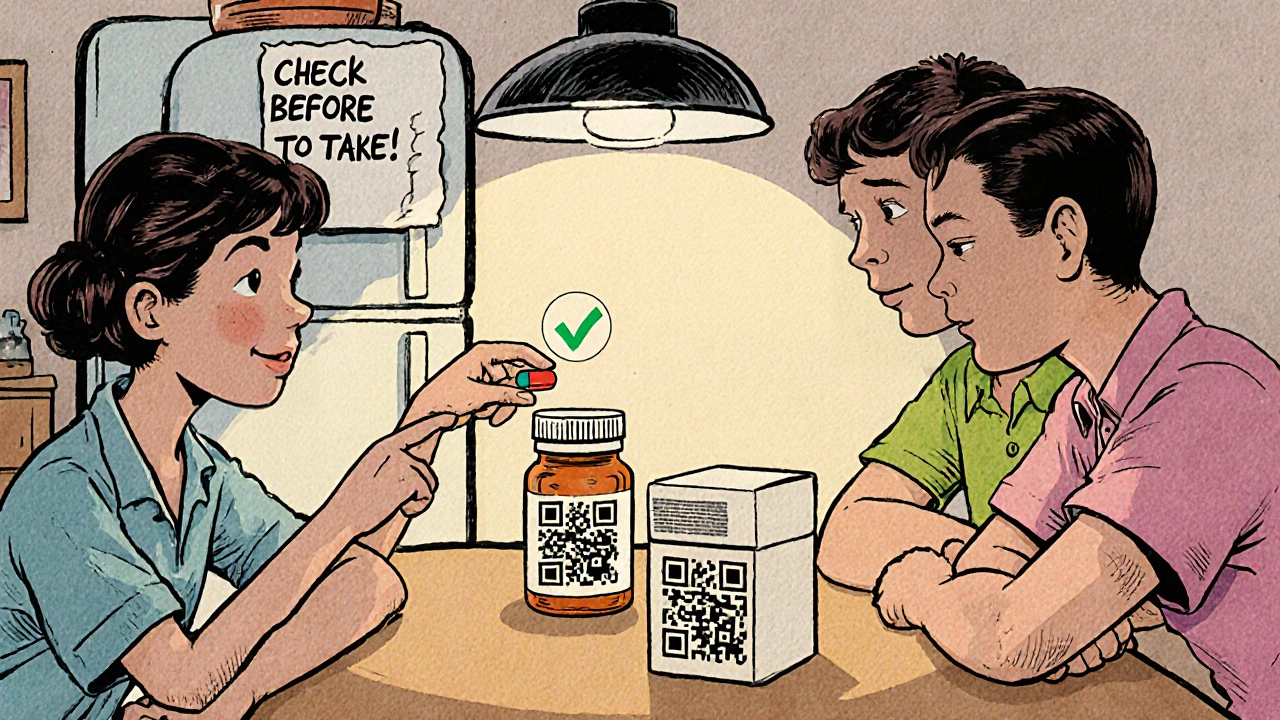
Why Technology Isn’t Enough
Pharmaceutical companies are investing billions in anti-counterfeit tech: serialization, blockchain, QR codes, tamper-evident packaging. The EU made serialization mandatory in 2019. The FDA is rolling out similar systems. But here’s the catch: technology only works if the system is intact.
In countries with weak enforcement, fake drugs slip through. A barcode might be real-but the medicine inside isn’t. A QR code might scan correctly-but the data it links to is falsified. A 2023 WHO report found that 73% of counterfeit medicines now pass basic visual inspection. That means even experts can’t always tell the difference.
And not everyone has access to these tools. Older adults, low-income patients, and people in rural areas may not have smartphones, internet, or the literacy to use verification apps. That’s why patient vigilance can’t be replaced. It’s the human layer that fills the gaps.
As Dr. Margaret Hamburg, former FDA Commissioner, put it: “No technological solution can replace the human element of patient observation when 30% of counterfeit medicines enter through legitimate-looking online portals.”
Technology helps. But your eyes, your questions, your willingness to speak up-that’s what stops the fake drugs from reaching you.
How to Build a Habit of Vigilance
Checking your medicine isn’t something you do once. It’s something you do every time. Like buckling your seatbelt. Like washing your hands.
Start small. The next time you pick up a prescription, pause. Take out your phone. Open the packaging. Compare the pill to your last bottle. Check the expiration date. Look for the seal. Ask your pharmacist: “Is this the same as before?”
Set reminders. Put a note on your fridge: “Check the pill before you take it.” Use the WHO’s free Medicines Safety app-it’s available in 15 languages and helps you verify products and report issues.
Teach your family. If you help an elderly parent or a teenager manage meds, show them how to spot fakes. One study found that patients who received simple education from their pharmacy improved their vigilance by 52%.
It takes 3-5 purchases for most people to get comfortable with these checks. After that, it becomes automatic. And that’s the goal: not fear, but confidence. Confidence that you’re taking the right medicine, safely.
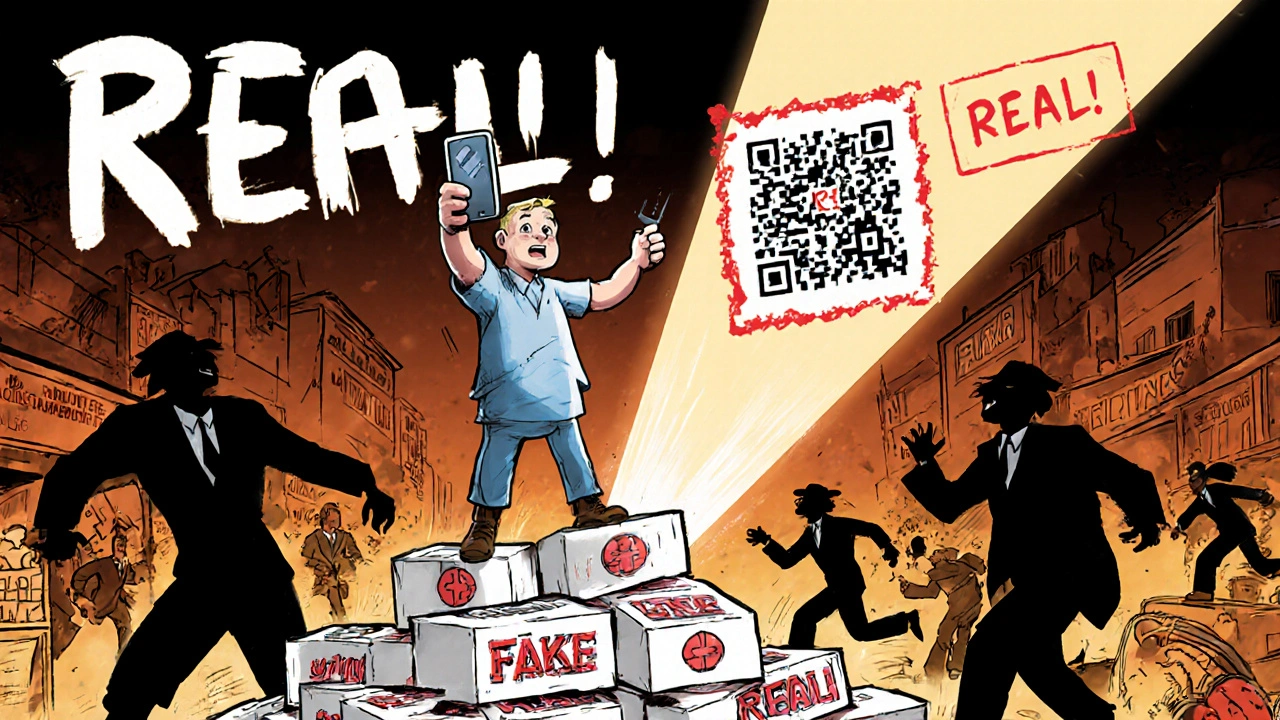
What’s Changing-and What’s Coming
The fight against fake drugs is evolving. In 2024, France launched digital medicine leaflets that require a QR scan to view instructions. Brazil followed in June. India is testing blockchain-based tracking that lets you see the full journey of your medicine-from factory to pharmacy.
By 2027, Pfizer predicts 95% of prescription drugs will have some kind of consumer-verification feature. That’s good. But it’s not a magic fix. The same WHO report that praised these tools also warned: “If patients don’t know how to use them, they won’t help.”
That’s why education matters more than ever. The WHO’s 2024-2028 plan calls for mandatory anti-counterfeit training in national health systems. The goal? Reach 70% of the population in high-risk areas. Thailand did it. Their public education campaign cut counterfeit incidents by 37% in two years.
But progress isn’t even. In low-income countries, only 29% of patients regularly check their medicines. In high-income ones, it’s 78%. That gap isn’t just about money-it’s about access to information.
That’s where you come in. If you’re reading this, you’re already ahead. You’re not waiting for someone else to fix it. You’re taking responsibility. And that’s the most powerful tool we have.
Final Thought: Your Safety Is Your Responsibility
Counterfeit drugs are a global problem. But your protection? That’s local. That’s personal. That’s in your hands.
You don’t need a degree in pharmacy. You don’t need expensive tech. You just need to pay attention. Ask questions. Trust your gut. If something looks wrong, it probably is.
The next time you get a new prescription, take a second. Look at the pill. Check the box. Ask your pharmacist. Report anything odd. You’re not just protecting yourself-you’re helping stop a global crime.
One person. One pill. One decision. That’s how the tide turns.

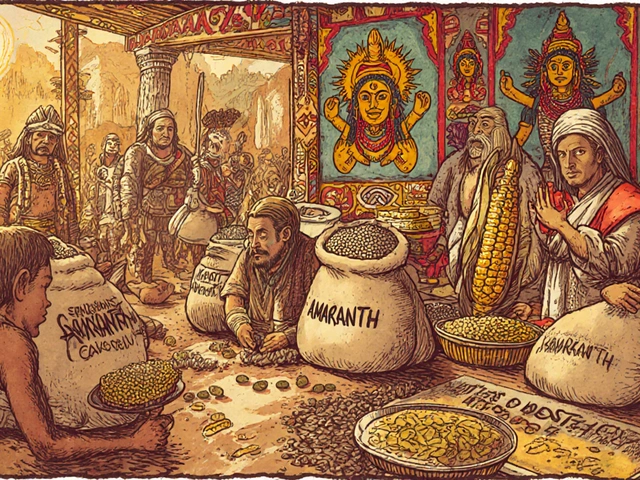
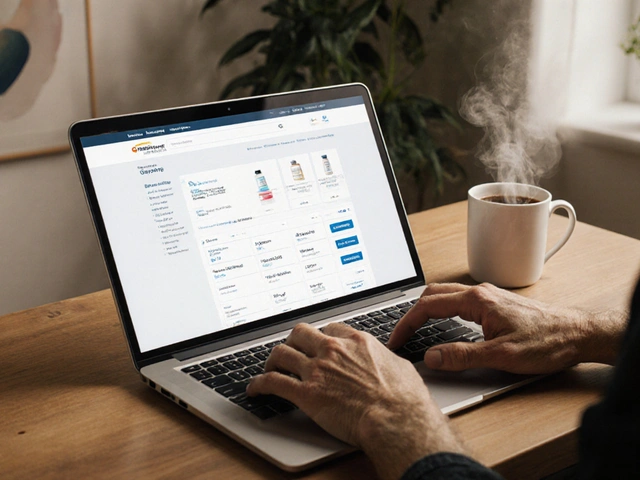
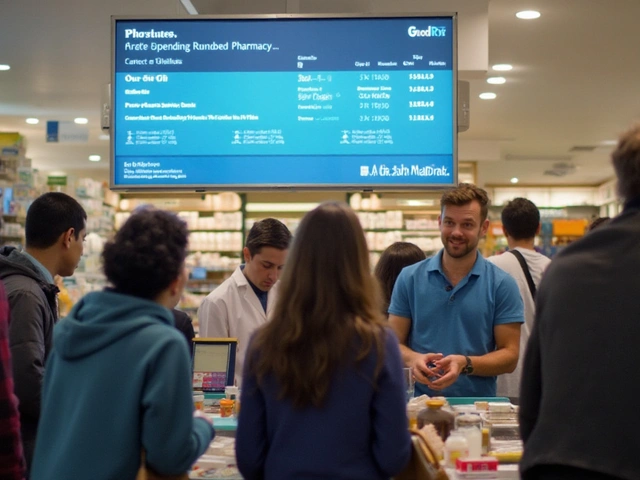

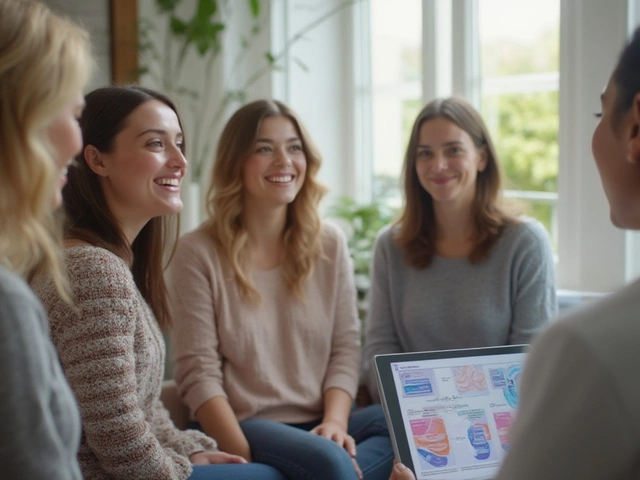
Comments
They let corporations control the narrative while people die. You think a QR code saves you? It’s a placebo for the privileged. The real problem? Pharma doesn’t want you to know how easy it is to fake a label. They profit from your ignorance. And now they’re selling you apps like it’s a fix. Pathetic.
It’s fascinating how we outsource safety to systems we don’t understand. We trust barcodes like they’re divine signatures, but we never ask who encoded them. The real vigilance isn’t checking the pill-it’s questioning why we’ve been trained to believe that technology alone can protect us from human greed.
In India, we know this too well. My aunt took fake malaria pills-she almost died. Now I check every box, even if it costs extra. No app can replace your eyes. If it looks wrong, it is wrong. Don’t wait for someone to save you. Save yourself.
For those who can’t afford to buy from licensed pharmacies, the options are brutal. I’ve seen elderly patients buy from Amazon because it’s cheaper. The system fails them. Technology helps-but only if you have access, literacy, and time. We need policy, not just personal vigilance.
Check the seal! Check the imprint! Check the expiration date! Check the source! Check the QR code! Check the pharmacy license! Check your gut! Check your instincts! Check before you swallow! Don’t just assume! Don’t be lazy! Don’t be trusting! Don’t be naive! This isn’t optional-it’s survival!
This is one of the most important public health messages I’ve seen in years. The fact that we’re still relying on individual vigilance in 2024 is a failure of systemic accountability. But until that changes, your awareness is the only shield. Thank you for making this so clear.
Oh, so now we’re supposed to become amateur pharmacists because corporations are too lazy to stop fakes? Brilliant. Let’s blame the patient who can’t afford $400 insulin and then tell them to scan a QR code. Meanwhile, the same companies that sell you the fake drugs also sell you the app to detect them. It’s a beautiful, cynical loop.
Bro, I just got my blood pressure meds from a site that looked legit-scanned the QR, it said 'REAL'-but the pill tasted like chalk. I called the FDA. They said 'Thanks for reporting, we’ll look into it.' That’s it? That’s the system? I’m not risking my life for a 1% chance. No more online buys. Ever. 😡
I never thought about comparing pills until I read this. I just assumed if the bottle looked right, it was fine. But last week I noticed my metformin was a little lighter than usual. I called my pharmacist. Turns out they switched manufacturers. But if I hadn’t noticed, I wouldn’t have asked. I’m going to start keeping old bottles now.
Let me be clear: if you buy medicine online without a prescription, you’re not just taking a risk-you’re inviting chaos into your body. There is no excuse. No discount. No convenience. No 'it’s just one time.' Fake drugs kill. And if you’re the kind of person who clicks 'Buy Now' on a Facebook ad for 'cheap Viagra,' you’re not a customer-you’re a target.
Why are we even having this conversation? Because the system is broken. But instead of waiting for regulators to act, we’re being told to become detectives. Fine. I’ll be the detective. I’ll check every pill. I’ll report every fake. I’ll call out every pharmacy that won’t answer my questions. But don’t call me paranoid. Call it justice.
Wow. So the solution to a multi-billion dollar criminal enterprise is... checking the font on a pill bottle? This is like telling people to lock their doors while the bank is being robbed. You’re not stopping fake drugs-you’re just making people feel better about being powerless.
Let me tell you something-this isn’t about pills. This is about control. The pharmaceutical industry wants you to believe you’re safe because you bought from a 'trusted' source. But they’re the ones who profit when you’re sick. They don’t want you healthy. They want you dependent. And now they’re selling you apps to feel safe while they keep raising prices. Wake up. This isn’t medicine-it’s a racket.
i live in india and i saw fake insulin sold in a small town clinic last year the packaging looked perfect but the vial was warm when it should be cold i told the nurse and they just laughed i reported it to health dept but nothing happened still i tell everyone i know to check the temperature and the expiry date